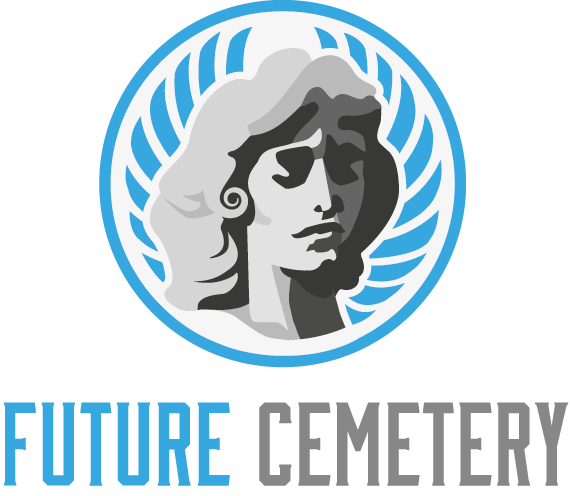Di dunia perjudian online, togel telah menjadi salah satu permainan yang paling diminati oleh banyak orang. Salah satu platform yang telah terbukti terpercaya dalam menyediakan layanan togel adalah Uni4D. Dengan berbagai fitur menarik dan kemudahan akses, situs Uni4D menawarkan pengalaman bermain togel online yang menyenangkan dan aman bagi para pemain. Melalui website Uni4D, para penggemar togel dapat dengan mudah menemukan informasi terbaru seputar angka togel, prediksi togel, dan hasil live draw togel.
Bagi Anda yang mencari bandar togel yang terpercaya, Uni4D adalah pilihan yang tepat. Dengan link Uni4D yang selalu diperbarui, pemain dapat mengakses berbagai permainan toto togel dan mendapatkan informasi tentang togel hari ini, nomor togel, dan berbagai tips untuk meningkatkan peluang menang. Bergabunglah dengan komunitas togel Uni4D dan nikmati keseruan permainan yang tak tertandingi.
Apa Itu Uni4D?
Uni4D adalah salah satu situs terpercaya yang menyediakan layanan togel online. Dengan kemudahan akses dan tampilan yang user-friendly, pengguna dapat menikmati berbagai permainan togel dengan lebih nyaman. Uni4D menawarkan berbagai jenis permainan togel, termasuk toto togel, yang populer di kalangan penggemar judi angka.
Situs Uni4D juga dikenal karena keamanan dan keandalannya. Informasi pribadi dan transaksi keuangan pengguna terlindungi dengan baik, sehingga pemain dapat bermain dengan tenang tanpa khawatir akan kebocoran data. Selain itu, Uni4D berkomitmen untuk memberikan layanan pelanggan yang responsif dan profesional.
Melalui website Uni4D, pemain dapat menemukan berbagai fitur menarik, seperti prediksi togel dan live draw togel. Fitur-fitur ini membantu pemain dalam menentukan angka togel yang berpotensi menang, sehingga pengalaman bermain togel menjadi lebih menarik dan menguntungkan. Uni4D tetap berusaha untuk memenuhi kebutuhan para pemain dengan menghadirkan inovasi dan peningkatan layanan secara berkala.
Keunggulan Situs Uni4D
Situs Uni4D menawarkan berbagai keunggulan yang menjadikannya pilihan utama bagi para pecinta togel online. togel online Dengan antarmuka yang ramah pengguna, website Uni4D memudahkan pemain untuk mengakses berbagai permainan togel tanpa kesulitan. Selain itu, proses pendaftaran dan transaksi yang cepat serta aman menjamin kenyamanan setiap pengguna saat bermain togel di platform ini.
Salah satu keunggulan terbesar Uni4D adalah sistem prediksi togel yang akurat dan terpercaya. Para pemain dapat memanfaatkan angka togel dan nomor togel yang disajikan dalam bentuk analisis dan data statistik untuk meningkatkan peluang mereka dalam memenangkan permainan. Dengan menyediakan informasi lengkap tentang togel hari ini, Uni4D memastikan bahwa setiap pemain mendapatkan semua alat yang mereka butuhkan untuk membuat keputusan yang tepat.
Selain itu, Uni4D juga terkenal dengan layanan pelanggan yang responsif dan profesional. Bandar togel di platform ini selalu siap membantu menjawab pertanyaan dan memberikan dukungan ketika dibutuhkan. Dengan adanya live draw togel yang dilakukan secara transparan, para pemain dapat menyaksikan hasil permainan secara langsung, menambah kepercayaan dan kepuasan dalam pengalaman bermain togel online mereka.
Cara Daftar di Uni4D
Untuk memulai pengalaman bermain togel online di Uni4D, langkah pertama yang perlu Anda lakukan adalah mengunjungi website resmi Uni4D. Pastikan Anda menggunakan link Uni4D yang terpercaya agar keamanan data pribadi Anda terjamin. Setelah Anda berada di halaman depan, cari tombol daftar yang umumnya terletak di bagian atas halaman.
Setelah mengklik tombol daftar, Anda akan diminta untuk mengisi formulir pendaftaran. Isilah semua informasi yang diperlukan, seperti nama lengkap, alamat email, dan nomor telepon. Pastikan semua informasi yang Anda masukkan adalah benar dan valid. Hal ini penting agar proses verifikasi akun berjalan lancar dan Anda dapat menikmati berbagai layanan yang ditawarkan oleh bandar togel ini.
Setelah mengisi formulir, biasanya Anda akan menerima email konfirmasi. Ikuti instruksi dalam email tersebut untuk mengaktifkan akun Anda. Setelah akun aktif, Anda dapat melakukan login, melakukan deposit, dan mulai bermain togel hari ini. Selamat bergabung dan semoga beruntung dengan prediksi togel Anda!
Prediksi Togel Hari Ini
Prediksi togel hari ini adalah salah satu aspek yang paling dinantikan oleh para pemain togel online. Dengan informasi yang akurat dan analisis yang mendalam, para pemain dapat meningkatkan peluang mereka untuk meraih kemenangan. Situs Uni4D menyediakan berbagai prediksi yang didasarkan pada data dan statistik dari hasil-hasil sebelumnya, sehingga para pemain dapat membuat keputusan yang lebih bijak sebelum memasang angka.
Sebagai salah satu situs togel terpercaya, Uni4D menawarkan prediksi yang tidak hanya sekadar angka biasa, tetapi juga mencakup analisis tren dan pola yang bisa muncul dalam hasil undian. Pemain bisa mendapatkan akses mudah melalui website Uni4D untuk melihat berbagai prediksi harian yang disusun oleh ahli togel. Ini semakin memperkuat kepercayaan pemain pada hasil yang ada di situs ini.
Selain itu, Uni4D juga menyajikan live draw togel yang memungkinkan pemain untuk menyaksikan hasil undian secara langsung. Dengan ini, pemain bisa mendapatkan pengalaman yang lebih mendalam dan interaktif dalam permainan togel online. Prediksi dengan basis data yang kuat, ditambah dengan live draw, menjadikan Uni4D sebagai pilihan utama untuk semua petaruh togel hari ini.
Informasi Live Draw Togel
Live draw togel menjadi salah satu momen paling dinanti oleh para pemain togel online. Melalui proses live draw, pemain dapat langsung melihat hasil undian angka togel secara real-time. Hal ini memberikan transparansi dan kepercayaan bagi para bettor bahwa hasil yang diumumkan adalah autentik dan tidak dimanipulasi. Di situs uni4d, live draw togel dilakukan secara rutin dan dapat diakses dengan mudah oleh semua anggota.
Setiap sesi live draw akan menampilkan nomor togel yang keluar pada hari itu. Pemain dapat menyaksikan langsung dan menunggu dengan penuh harap angka keberuntungan mereka muncul. Dalam hal ini, situs uni4d menyediakan fitur live streaming yang memungkinkan pengguna untuk menikmati pengalaman menegangkan dari undian togel. Dengan adanya dukungan teknologi yang baik, proses ini menjadi lebih menarik dan interaktif.
Selain itu, informasi mengenai hasil live draw togel hari ini juga dapat diakses di website uni4d. Ini memudahkan pemain untuk melakukan pengecekan setelah sesi draw selesai. Selanjutnya, para bettor dapat melakukan analisis dan prediksi untuk sesi berikutnya berdasarkan hasil yang telah dikeluarkan. Dengan adanya fasilitas seperti ini, uni4d berkomitmen untuk menjadi bandar togel terpercaya dan memberikan pengalaman terbaik bagi para penggemar togel online.
